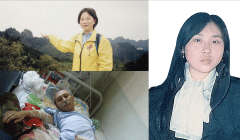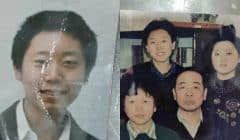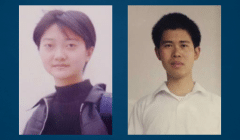The Chinese Communist Party: Timeline
From the time the Chinese Communist Party came to power in 1949 up through today, between 65 and 80 million people have been killed or died unnatural deaths at the hands of China’s Communist Party. The following summary highlights several notorious CCP campaigns.
Land Reform, Suppression of Counterrevolutionaries Campaigns
Five Anti’s Campaign
Great Leap Forward
Cultural Revolution
1989 Tiananmen Square Massacre
“Eradication” of Falun Gong Campaign
Land Reform, Suppression of Counterrevolutionaries Campaigns
(1950–1952; 2.4–5 million killed)
Under the guise of “land reform” and suppressing “reactionaries,” within two short years Chinese authorities killed 2.4 million people, according to the CCP’s own figures. Some put the figure at 5 million. With its violence the CCP achieved three goals: 1) the total elimination of village leaders, who were replaced with CCP authorities; 2) obtaining, from those killed, massive personal wealth; and 3) instilling deep, lasting fear of the CCP.
Five Anti’s Campaign
(1/1952–10/1952; tens of thousands killed or driven to suicide, hundreds of thousands imprisoned in forced labor camps)
Using the pretext of “financial reform,” the CCP regime targeted capitalists and business owners across China in a show of force and terror. Victims were often forced to pay arbitrary “taxes” that well exceeded total holdings. Tens of thousands were killed outright, with thousands more being driven to suicide by the trauma of arrests, social ostracism, brainwashing, and punishment.
Great Leap Forward
(1959–1961; 30–40 million dead)
In an terribly ill-conceived plan to double China’s steel production, the CCP essentially turned the nation into one large labor camp. The fanatical drive required all Chinese to take part in steel-making. Farmers, forced to participate, abandoned their crops to rot in the fields. Local officials meanwhile falsely reported large crop yields, further feeding the zeal. The result: over 30 million starved to death, and the country was plunged into economic depression. In the aftermath CCP propagandists rationalized the calamity as a “natural disaster.” No disasters, however, were recorded at the time.
Cultural Revolution
(1966–1976; 7–8 million killed or driven to suicide)
The Great Proletarian Cultural Revolution aimed for nothing less than destruction of all traditional Chinese culture and values. The campaign reached such a frenzy that children would beat or even kill parents, teachers, and elders; many turned them in to authorities for torture or public humiliation. Killing became among CCP factions a way to prove one’s “revolutionary” status. So chaotic were the times that rampant cannibalism broke out in multiple regions. “The outside world obtained a glimpse of the violence,” according to China scholar Kenneth Lieberthal, only “when trussed-up corpses, many without heads, began floating down the Pear River into Hong Kong.”
1989 Tiananmen Square Massacre
(June 4th, 1989; 600–3,000 killed)
The CCP leadership brought a violent end to months of student-led sit-ins and hunger strikes on Beijing’s Tiananmen Square by ordering armed military to take the Square by force. The unarmed students were gunned down or crushed under tanks in a horrific bloodbath. To this day the CCP has not apologized or admitted any wrongdoing in the tragedy.
“Eradication” of Falun Gong Campaign
In July 1999 then-CCP-Chairman Jiang Zemin, resentful of Falun Gong’s popularity, ordered the peaceful group “eradicated.” The ensuing campaign—violent and brutal—has been seen by many, like CCN Senior Analyst Willy Lam, as “a throw-back to the Cultural Revolution.” Some 30,000 cases of torture and abuse in custody have been documented, while as many as 3 million languish in jails and forced labor camps. Women are subjected to rape, forced abortions, and sexual violations by authorities. The campaign is believed to the largest, longest, most systematic, and costly campaign ever against a single group of people in China.






